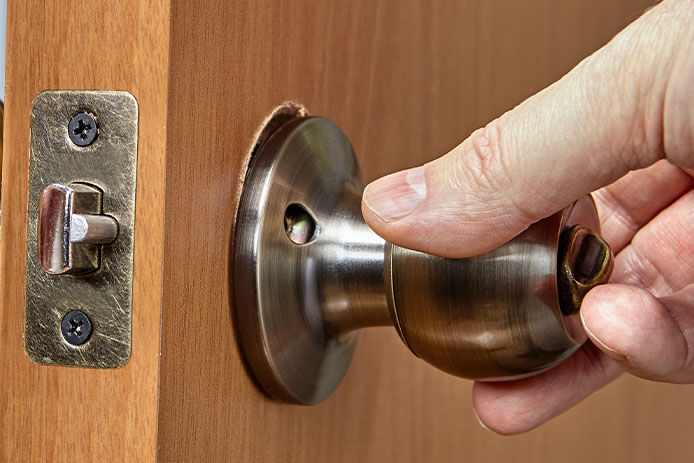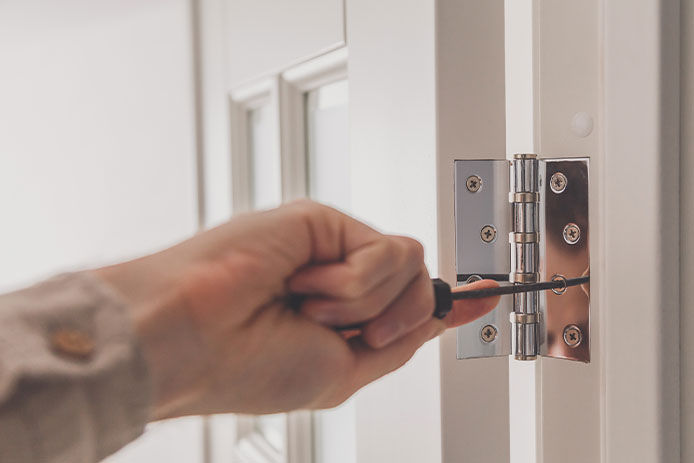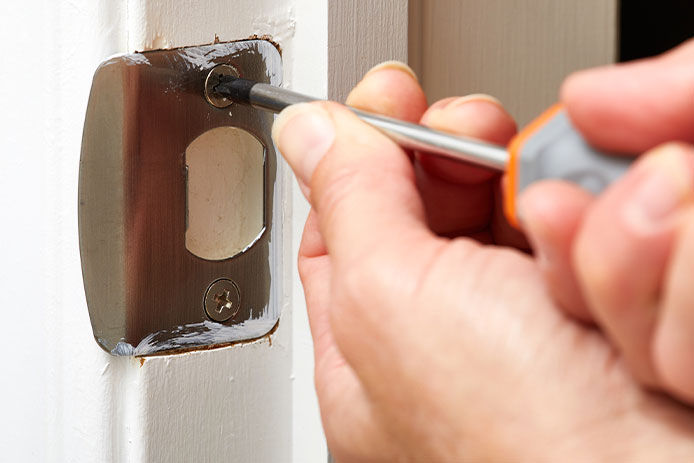How to Fix a Door That Doesn't Latch

It's a spooky experience the first time a door pops open right after you try to close it. Yet once it has happened a few dozen times, it becomes more annoying than supernatural. Even brand-new houses can have latching issues. But it's more common in older homes and can set in at any time. There's no need to settle for poorly latching doors or call a professional for repairs. With a screwdriver and some shims, you might be able to fix the problem yourself in under an hour. A door or frame will rarely need serious repairs to restore the latching function.
What Causes Latching Issues?

If a door pops open after you push it shut and only stays closed if it's locked, the latch isn't sitting in the strike plate well enough. It may become misaligned due to any reason that leads to the frame shifting around the door. The door itself also pulls on the hinges and the screws, slowly allowing it to sink out of alignment. While some may claim that door latching issues are a sign of serious structural damage, they're usually just minor inconveniences due to natural and expected settling. Fix the latching issue and see if it returns as a diagnostic measure to determine if you need to look further for potential damage.
Measure the Misalignment

First, figure out how much the latch is missing the opening in the strike plate. Check the strike plate for signs of wear, like finish that is worn away or scratches to the top or bottom of the opening. If there are no obvious marks yet, try applying a little grease crayon or lipstick to the tip of the latch. It'll leave a mark on the strike plate to show where the misalignment is but will wipe away easily when you're done.
Tighten the Hinges

The first step to adjusting the latch alignment is to check the door's hinges. As the door's weight settles, the hinges can loosen up a bit and let the door sag. This outcome will usually lead to a latch that marks the bottom of the strike plate opening rather than the top. Try tightening the screws in the top hinge, in particular, to see if there's any response in the alignment. Using a larger 3-inch long screw for the top hole of the top hinge can also boost the support for the door and prevent sagging in the future. If more boost is needed, try using thin wood shims under the hinges. Unscrew the door, prop it up with a book to help align it with the existing hinge marks, and place the shims in place as you reattach the hinges with a new set of door screws.
Reposition the Strike Plate

If it's not the door that's having a problem, it may be an issue with the placement of the strike plate. The plate can also shift downward over time if the fasteners loosen up with use. If there's a large mark left on the plate from misalignment, try moving the strike plate down by the same amount and cutting a new space in the door frame for the opening. A small chisel helps you expand the existing opening after moving the strike plate downward or upward. Keep adjusting the placement until you no longer get marks on the plate from misalignment.
File or Enlarge the Strike Plate

If there's a very small amount of misalignment, making the opening on the strike plate a little larger is the easiest method to fix the issue. A metal chisel or file is the best tool to use. Take the strike plate off by removing the screws and setting them aside. Hold it in a vise grip or benchtop clamp and work on the opening with a rotary tool, chisel, or metal file until the marked area disappears. Replace the plate and, if necessary, trim the opening in the door frame with a chisel for a smooth fit.
If the latch is the cause of the issues with the door staying closed, you may need a new door handle set instead. A complete set will include a new latch and striker plate so you can start from scratch for a good fit.
While do-it-yourself projects can be fun and fulfilling, there is always a potential for personal injury or property damage. We strongly suggest that any project beyond your abilities be left to licensed professionals such as electricians, plumbers, and carpenters. Any action you take upon the information on this website is strictly at your own risk, and we assume no responsibility or liability for the contents of this article.